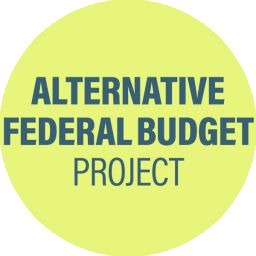Introduction
For the first time in Canada’s history, meaningful progress on making licensed child care affordable has been achieved across the country. Federal funds transferred to the provinces and territories under the Canada-wide Early Learning and Child Care Agreements have been used to lower parent fees by approximately 50 per cent over the last year, and several of Canada’s provinces and territories now have set fees at $10 a day or less.
This life-changing impact of parent fee reductions has brought Canada to a pivotal moment on the journey to a high-quality, affordable, and inclusive child care system. Public funding has replaced private funding as the principal source of revenue for licensed child care operators, creating the pathway for significant improvements in government-driven publicly financed quality enhancements. Parent fee reductions have also increased demand for licensed programs, widening the longstanding gap between demand and supply, and exposing access inequity. This has further exposed the failure of governments to expand licensed child care and to retain and recruit qualified early childhood educators to support existing and new programs.
The 2021 federal budget committed $30 billion over five years (2021- 22 to 2025-26) to build the foundation of a primarily not-for-profit and public Canada-wide early learning and child care system.1 The 2022 federal budget created a $625 million Early Learning and Child Care Infrastructure Fund to contribute to financing the capital cost of increasing the number of spaces, although the money has not yet flowed.2
Two years into construction of the promised system, it is evident that course corrections are required. Increased public funding and policy measures are needed to ensure that licensed child care providers have the resources to other quality programs, including sufficient funding to support a more highly qualified and much better compensated workforce. Additionally, an adequately funded and structured federal capital fund is necessary.
Overview
In the first year of the new child care program, public funding allowed parent fees to be reduced dramatically. This development had the effect of increasing parents’ demand for licensed child care. Families now expect that affordable child care should be available when and where needed. In 2021, however, there were only enough licensed spaces for 29 per cent of children aged 0-12 years.3 The Canada-wide Early Learning and Child Care Agreements commit governments to 250,000 new licensed spaces by 2025-26 but little progress has been made in expanding the licensed sector. There are several reasons for this.
Almost all federal funds transferred to the provinces and territories for 2021-22 and 2022-23 were allocated to replacing parent fees with public funds. None of the provinces or territories have provided sufficient capital funds to cover the costs of constructing new quality learning environments. In each jurisdiction, governments continue for the most part to use weak approaches to increasing the supply of child care, relying heavily on existing providers to use their over-stretched capacity to expand.
At the same time, too little public funding and far too limited public policy changes have been directed to improving poor working conditions and compensation in the child care sector, which are the root causes of the sector’s worsening staff recruitment and retention crisis. Therefore, even if governments were doing more to create licensed spaces, there wouldn’t be enough qualified educators to staff them.
In June 2023, the House of Commons voted unanimously to support Bill C-35, An Act Respecting Early Learning and Child Care in Canada.4 The legislation sets out the government’s vision, principles, and reporting mechanisms for an early learning and child care system for all. It acknowledges Indigenous rights and jurisdiction, makes permanent the federal commitment to funding, and sets up a National Advisory Council.
The challenge—and the opportunity in Federal Budget 2024—is to build on the parent fee reductions from 2021 and develop what is now a mostly publicly funded system in a way that will allow the realization of the aspirations set out in Bill C-35. To meet this challenge, additional federal funding must prioritize systemic action in three key areas:
1. Compensate educators fairly and improve working conditions
Although all governments acknowledge the critical shortage of qualified educators, and many have taken some steps to address it, the measures taken to date have been insufficient, particularly given high inflation and the highly competitive labour market.
A recent analysis5 notes that six provinces and territories now have wage grids of one kind or another6,7,8,9 in place for early childhood educators, an increase from just two provinces (Quebec and Prince Edward Island) in 2020. While the analysis shows that wage grids are associated with higher minimum wages, educators observe that the current wage grids do not yet consistently and adequately do the following:
- recognize qualifications, experience, and years of service • provide comprehensive benefits, including pensions
- support paid preparation time, career-laddering opportunities, ongoing professional learning and development, and access to proper resources and funding to enrich children’s learning environments
Low wages, minimal benefits, and poor working conditions continue to plague the child care sector, with many programs operating at less than full capacity because staff positions cannot be filled. Training more educators is not an adequate solution, as graduates often choose to work in higher-paid sectors of the economy.
All levels of government must work together to develop, fund, and implement comprehensive strategies to address this recruitment and retention crisis. The goal must be to properly value the important work of Canada’s educators with competitive wages, comprehensive benefits, and improved working conditions. Structurally, improved staff wages must become part of a centre’s operational budget, not an “add-on” wage enhancement payment. The federal government must increase its annual transfer payments and earmark funds to support concrete and effective strategies as part of the funding agreement action plans.
2. Make expanding high-quality, climate-resilient, public, non-profit child care facilities a public responsibility— not a private one
A recent report highlights the need for public, focused expansion strategies in each provincial/territorial action plan.10 The report geocodes the more than 750,000 full-time licensed child care spaces for children not yet in kindergarten and finds a substantial shortage of spaces in most of Canada. Overall, nearly 48 per cent of younger children in Canada live in a child care desert, defined as a postal code that has more than three children per licensed child care space. The root of the problem is that governments Canada-wide continue to rely on a privatized, market-based approach, relying on individual providers responding to “requests for proposals” and usually deciding the location and type of program on their own.11
Clearly, this longstanding approach has failed to deliver the equitably distributed high-quality programs families need, and it stands in stark contrast to the publicly planned and funded approach commonly used to develop public facilities such as schools, hospitals, and libraries.
Publicly led, planned, and funded expansion strategies are what we need, with sufficient public funding and consistent design standards in place to develop climate-resilient, not-for-profit, and public child care facilities that meet local community needs, along with Indigenous-led programs and facilities.
Effective expansion strategies will also require earmarked capital funding for new builds and retrofits.
As demand for child care has risen with the federally funded fee reduction in 2022 and the post-pandemic return to work, making child care accessible, high-quality, and inclusive will require that federal, provincial, territorial, Indigenous, and municipal governments come together with civil society, child care community partners, and parents to address the shortage of child care coverage in Canada.
3. Implement clear, consistent, operational funding models
Child care funding remains an inconsistent patchwork of parent fee subsidies, wage enhancements, and a variety of grants and payments. Instead, public funds should be used to finance child care programs based on clear and consistent formulas, with geared-to-income parent fees (sliding scale) capped at a maximum of $10/day. This model is the most effective way to ensure both accountability for public funding and a move away from the stigmatizing and ineffective individual parent fee subsidy model.
Moving forward, the federal government should use its spending power and partnership with the provinces and territories to put in place the following:
- Provincial/territorial operational funding models with accountability mechanisms to confirm that public funds are effectively and efficiently advancing the public goals of equitable access to high-quality, inclusive programs. Provinces and territories should be required to report on their progress regularly and publicly, using clear and consistent common indicators.
- Increases in the levels of public funding in operational funding models to achieve public goals without increasing parent fees. Increased public funding is essential for improving educator compensation and working conditions, which typically account for 80 to 90 per cent of the budget in non-profit child care programs and are key determinants of program quality, including inclusion.
First Nations, Métis, and Inuit rights
Furthermore, all governments must ensure that First Nations, Métis and Inuit rights and jurisdictions are respected throughout the child care system–building transformation, as detailed in both the Indigenous Early Learning and Child Care Frameworks and the Canada-wide Early Learning and Child Care Agreements.
Actions
Building on existing child care funding commitments, the AFB will contribute additional federal funding over the next three years to support four actions to build a publicly managed and publicly funded child care system consistent with the goals and principles of the new federal legislation.
Action one: develop and implement an in-depth, comprehensive, inclusive and Canada-wide workforce strategy to address the current recruitment and retention crisis, so that qualified educators are available and willing to staff existing and new facilities. Specifically, the AFB will increase federal transfers to the provinces and territories under the Canada-wide Early Learning and Child Care Agreements by $7 billion over three years to support full implementation of equitable wage grids, along with improved benefits and working conditions.
Action two: publicly led, equitable expansion of high-quality, climate resilient public and not-for-profit licensed child care facilities in each province and territory. Specifically, the AFB will increase the Early Learning and Child Care Infrastructure Fund by $10 billion to finance capital expansion costs.
The AFB will ensure that new federal transfers to provinces and territories are accountable for achieving the third and fourth actions: Action three: clear, consistent, and equitable operational funding models with adequate operational public funding of programs and effective accountability mechanisms.
Action four: implement maximum (not average) parent fees of $10 a day for all families Canada-wide by 2026, with either no fees or geared-to income fees for lower-income families.
The federal government has made the building of a child care system the centrepiece of its economic program and is spending billions to get results. But the stakes are also high for children, parents, gender and racial equity, and the economy more broadly. The 2024 federal budget must include measures and sufficient resources to ensure that all governments build the new child care system the right way.







